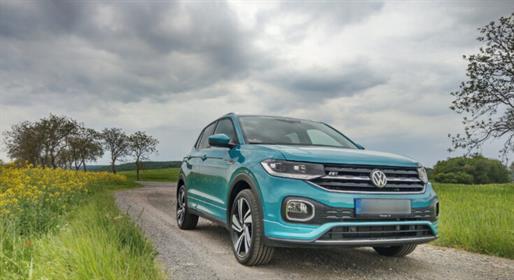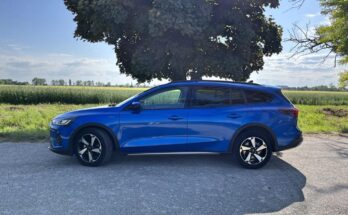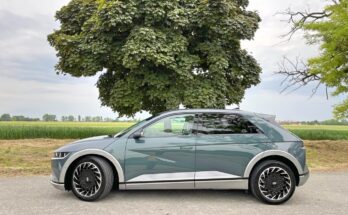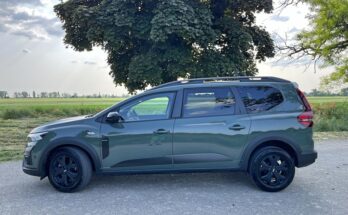The T-Cross model is the smallest member of the SUV family from Volkswagen, which appeared on the Czech market already last year. Specifically, it is a model that shares the basis with the classic Pole and at the same time with its siblings Skoda Kamiq and Seat Arona.
We currently tested this representative of the numerous and popular category of small SUVs with a turbocharged petrol 15-litre unit that worked with a seven-speed DSG automatic. The car also had a very stylish R-Line package and a distinctive turquoise color.
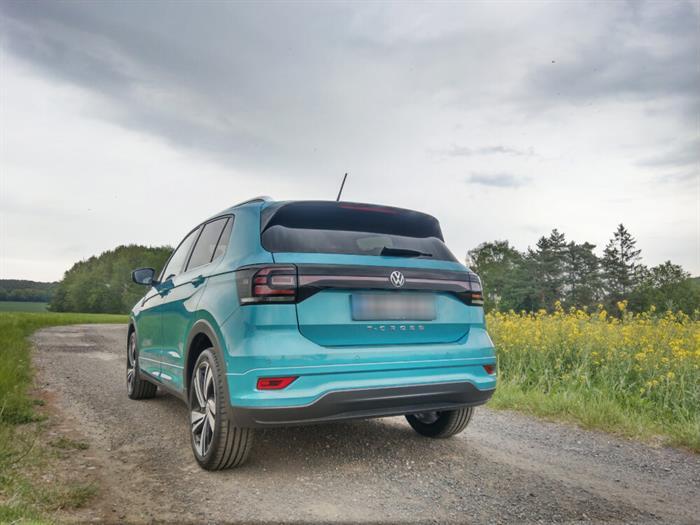
Exterior
In general, the external concept of the T-Cross adequately responds to the current design direction of the car company. The car therefore has quite simple and clean lines.
However, the tested piece in turquoise Makena fully responds to the playfulness that is certainly not alien to this segment. The announced turquoise color contrasts effectively with the black elements of the body.
These are represented in the front part by a voluminous front mask, or by a playful cut in the lower part of the bumper, which also houses the chrome-lined fog lights. The rear part then offers black-tinted, interconnected lamps, which also have a very futuristic structure and light signature.
For its higher body structure, the "plastering" of the lower part of both bumpers and all edges must not be missing. The 18-inch rims, which suit the tested car, reflect perfectly from them.
The Volkswagen T-Cross in the tested specification, i.e. with a distinctive turquoise color and the R-Line package, looks really great as a result. The small SUV segment simply suits cars that have flair. And that's exactly what the little Cross is like.

Interior
Thanks to the higher body proportions, two basic insights are immediately apparent in the interior. The T-Cross offers plenty of headroom, both in the front and rear positions. In addition, the T-Cross has a higher position behind the wheel and thus offers an excellent view from the car.
The interior itself offers quality "concern" processing, perhaps only the presence of harder plastics freezes. In terms of appearance, however, the interior of the car is pleasant and ergonomically well arranged.
In the tested car, the advertised dashboard was enlivened with an interesting spatial decor, which also changed proportions as it progressed.
The fully digital display of the instrument panel and the display of the on-board infotainment are materially and effectively connected within the discussion of the dashboard and thus form a compact unit. The display in the instrument panel in front of the driver will offer a decent diagonal and a fully digital display. The on-board infotainment display with a diagonal of 8" already has a logical layout and good graphics.
The multifunctional steering wheel then became very pleasant for me. It will offer more massive proportions and excellent workmanship. In its left part are the control elements of the adaptive cruise control, as well as the button for calling up driving assistants, which in my case was on a considerable permanent basis. I regularly turned off the lane keeping assistant, which unfortunately interferes quite vehemently with the steering itself. In the right part, there are controls with which you can navigate the menu of the digital display, which is located in the instrument compartment in front of the driver.
The middle part of the dashboard, these are the controls for the automatic air conditioning, and then the space for wireless charging of the mobile phone. Within the central tunnel, we have a selector for a seven-speed automatic transmission, quite high for my taste, as well as a classic handbrake and a pair of drink holders.
The car's seats are comfortable and spacious, and the rear bench also offers longitudinal movement.
The basic luggage space of the tested car was reduced, thanks to the presence of the excellent Beats music system, to a volume of 375 liters, after folding the backs of the rear seats, the luggage space increases to 1281 liters. Thanks to the construction of the car body, the loading edge is in a pleasant higher position.
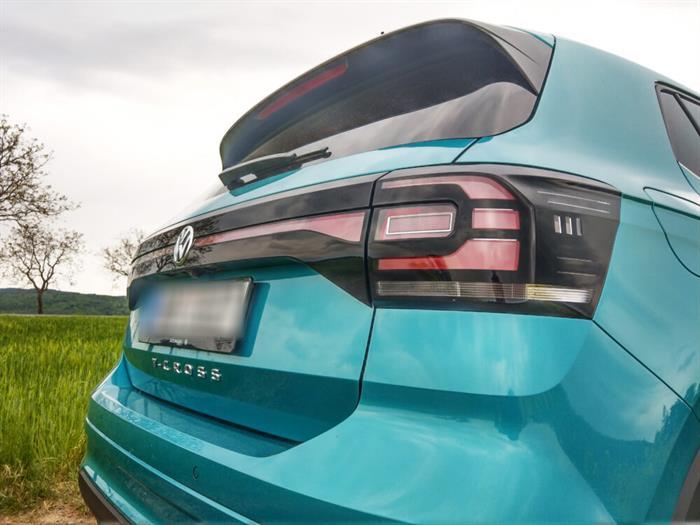
Offered motorizations and driving impressions of the tested fifteen hundred
The Volkswagen T-Cross is currently available with three petrol and one diesel engines. Gasoline engines are represented by two performance variants of the three-cylinder 1.0 TSI with outputs of 70 and 85 kW. The third petrol variant is the tested four-cylinder 1.5 TSI, which has an output of 110 kW. The diesel version is represented by the 1.6 TDI engine with a power of 70 kW.
The announced engines are connected to either a five-speed manual (in the case of the weakest three-cylinder), a six-speed manual or a seven-speed DSG automatic.
The piece we tested was therefore fitted with a 1.5 TSI turbocharged petrol engine with an output of 110 kW (150 hp) in addition to the cylinder deactivation function, which, however, can only be recognized thanks to the indication in the instrument panel. The motorization tested also cooperated with a seven-speed DSG automatic transmission, which transmitted power only to the front axle.
In terms of performance, the tested engine is more than adequate for the car, its other positive is a very decent torque of 250 Nm, which comes at 1500 rpm. I rate the motorization itself very positively, for its quiet and refined operation, and also for sufficient performance and, as a result, decent consumption, which averaged around 6.5 liters during the weekly test.
The tested 1.5 TSI engine is paired with a seven-speed dual-clutch DSG automatic in the T-Cross model. Here I have to admit that as I am used to 100% cooperation of these gearboxes, this model was able to surprise me even unpleasantly. It was most noticeable at the start itself, which comes with a certain time delay and a subsequent significant jerk. A smooth start then required really fine work with the gas pedal. In other situations, however, the transmission already worked according to previous habits. Changing individual speeds was quick and smooth.
In terms of chassis, the car is rather tougher, sportier, quite confident in corners and without significant tilts. The stiffness of the chassis is also largely due to the 18" discs with a low tire profile.
Driving the car is very pleasant, with a good response and without an exaggerated effect of the booster. Its effectiveness then changed depending on the selected driving mode, which the tested T-Cross also had.
So, if I ignore the occasional strange, jerky behavior of the car at start-ups, the tested T-Cross left me with a very good driving feeling.

In conclusion
The currently tested Volkswagen T-Cross impressed me primarily with its lively exterior, the turquoise color and the R-Line package suit it very well. Furthermore, the 1.5 TSI drive unit, which will offer the car very decent driving dynamics in the context of reasonable consumption.
Unfortunately, the Volkswagen T-Cross will not have it very easy in its segment, the competition is great and the price policy of the car manufacturer is not so friendly.
You can buy a T-Cross in the basic Life equipment from 467,900 CZK including VAT. It is a car with a basic three-cylinder gasoline engine with an output of 70 kW and a five-speed manual. We tested the 1.5 TSI engine with a seven-speed automatic and Life equipment, so you can buy it from CZK 566,900 including VAT. The specific piece tested, which was additionally embellished with the R-Line package, turquoise metallic color and other additional features (digital instrument panel, keyless entry, Beats music system, tinted rear windows, driving mode selection, etc.) then climbed with its purchase price for almost 780,000 CZK including VAT.
Source: Author's text
Image source: Author's own photos

